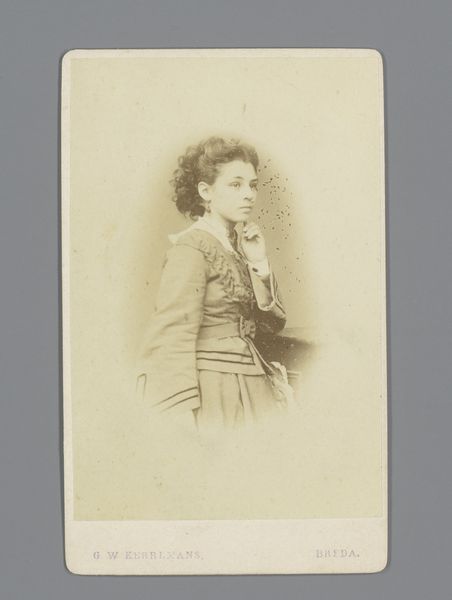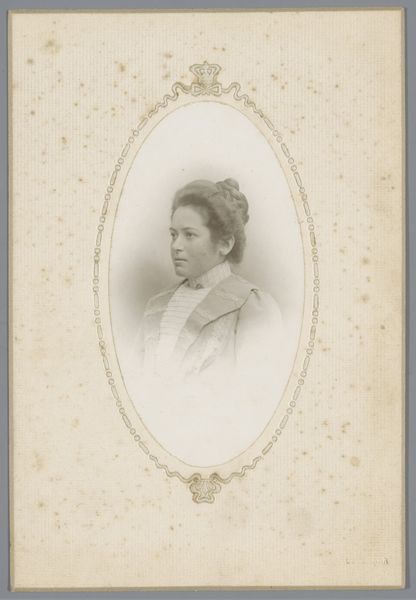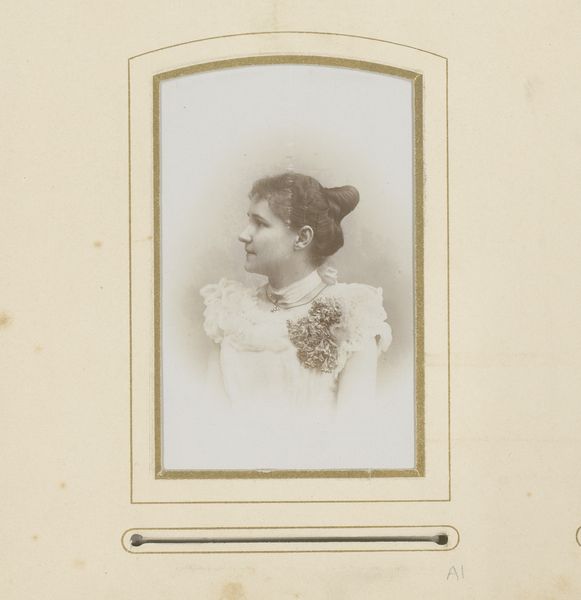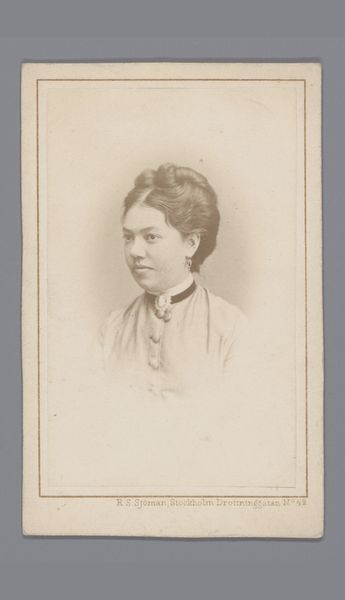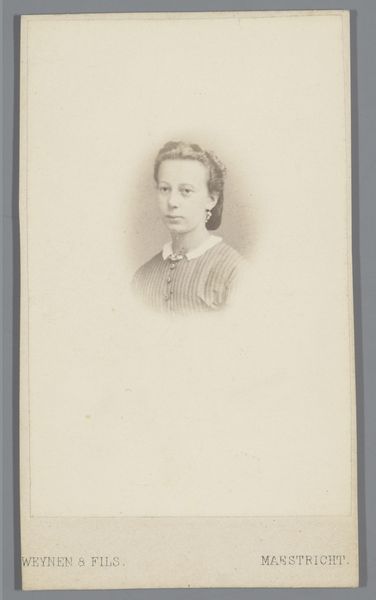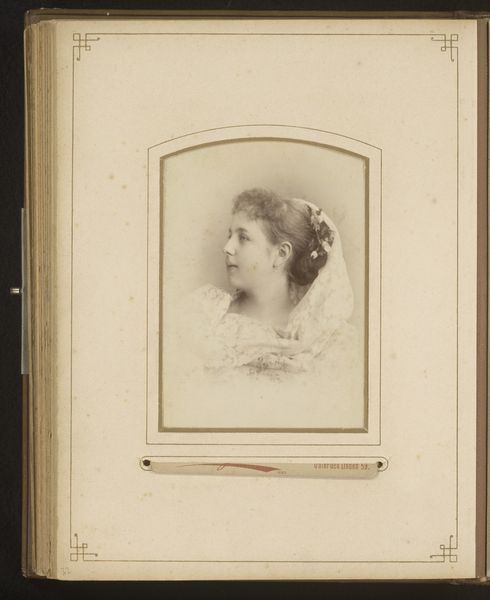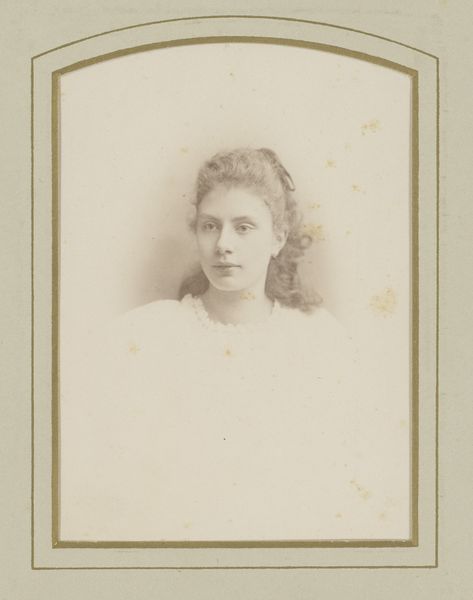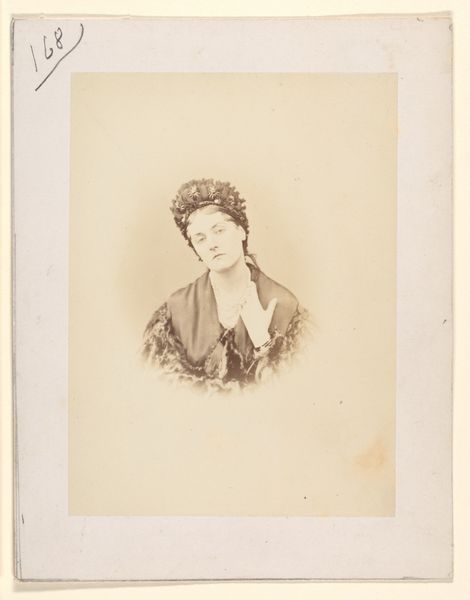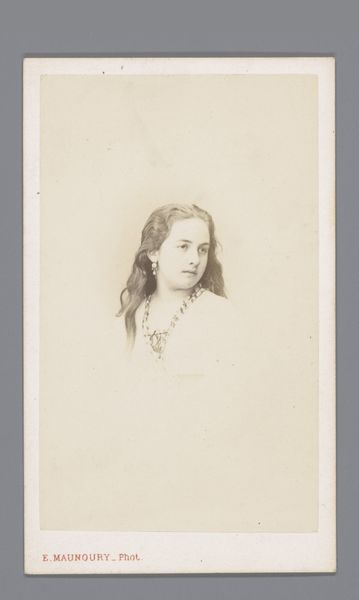
photography
#
portrait
#
photography
#
realism
Dimensions: height 105 mm, width 62 mm
Copyright: Rijks Museum: Open Domain
Editor: Here we have a photographic portrait by Eugène Manoury, "Portret van een onbekende vrouw," created sometime between 1870 and 1885. The sepia tones and the woman's averted gaze give it such a quiet, contemplative mood. What do you see in this piece? Curator: I see a commentary on the very act of representation in the late 19th century. Photography offered, ostensibly, a democratic form of portraiture, yet who had access? Who was being excluded, and what societal forces are at play when we consider "the unknown woman"? Is her anonymity a deliberate act of erasure, or simply a reflection of historical neglect? Consider how race, gender, and class shaped whose stories were told and preserved in that era. Editor: So, you're saying her anonymity isn’t just a historical accident but a reflection of power structures? Curator: Precisely. Realism in art, especially photography, aimed to capture an objective reality, yet it inevitably reflects the biases of the artist and the prevailing social order. The photograph seems like a record, but what if this record omits vital details? Editor: It makes me think about all the untold stories from that time. Was it typical to obscure women in these ways in portraiture? Curator: Think about the visual language of the period, the expectation that women occupy particular spaces, usually private. How does the deliberate ambiguity of this image disrupt or reinforce those conventions? We are left to imagine her history, and in that act of imagining, perhaps, begin to address some of those silences. Editor: I’ve never thought of portraiture that way – as a kind of active erasure. Curator: Indeed. And the absence can speak volumes. This photograph is not just a picture, it's a document reflecting what was valued and, equally important, what was deliberately not valued, in 19th century society. Editor: Thanks, that gives me a lot to think about in terms of visual rhetoric and the unseen narratives in historical portraits. Curator: It certainly illuminates photography's fascinating capacity for historical insight.
Comments
No comments
Be the first to comment and join the conversation on the ultimate creative platform.
